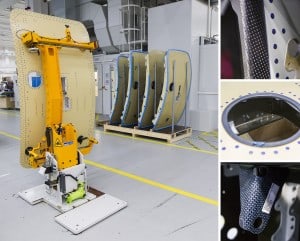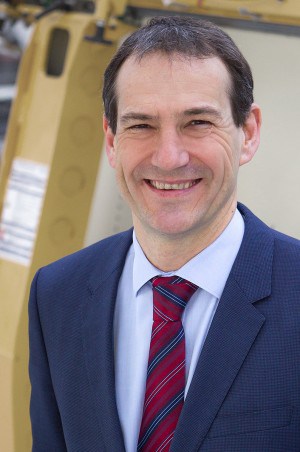
Competence in the aviation industry
In our interview, Helmut Färber talks about challenges in aviation and projects with FEV Consulting.
While the FEV Group is generally heavily focused on motors and the automotive industry, FEV Consulting has deeply involved itself from day one in the aviation industry with a wide variety of projects. Our consultants have been able to establish a strong reputation with many top-tier suppliers in the areas of launch and ramp-up management, lean supply chain, missing parts and supplier intervention management, as well as project turnaround and performance management.
In 2015, FEV Consulting went to the Airbus Helicopters site in Donauwörth. There, it supported the airplane doors production unit in the area of the A350 production ramp-up. The person responsible for this unit is Helmut Färber. He sat down with FEV Consulting to talk about the differences between automotive and aviation construction, and to explain what he appreciates about FEV Consulting.
>> FEV QUICKLY GETS TO THE HEART OF THE PROBLEM
Mr. Färber, a typical combustion engine is made up of approximately 500 individual parts and requires 3 to 4 years of development. Do these figures make aviation experts smile?
Helmut Färber: No, not at all! The development of the Airbus A350 took almost 10 years. The big difference in automotive construction, however, does not lie in product development. The market forces us to start production at a very early stage in development. That is the key difference
Can you elaborate?
Färber: Airplanes can easily reach a unit price of over USD 200 million and are produced in lesser quantities than in the automotive industry. In order for the program to also be a financial success and for the development costs of several billion euros to be recouped, it is practically necessary for the prototype and preliminary production to be done at the series level and sold.
How do you achieve that?
Färber: By generating a flowing transition from prototype construction to series production and directly integrating the feedback from test flights into the production. This also explains the lower delivery rates during the first years of a new airplane program.
In your current position, you are responsible for airplane doors. Is everything now done at the series level?
Färber: As with every new program, we also had various startup difficulties with door production of the A350. We broke new ground with regard to the production processes and materials. However, the difficulties have been resolved and the production ramp-up is going as planned.
You have known FEV Consulting since the early days. The first project – the A350 – started at the end of 2011.
Färber: Yes, I was the plant manager for the aviation supplier Premium Aerotec in Nordenham. Several strategy consultancies have supported the A350 Joint Improvement Project; FEV Consulting was one of them.
You were not immediately won over by this support. Why?
Färber: (laughs) That‘s true. Unfortunately, I have had varied experiences with consultancies. Some start by acting dominant and end up creating more support work for the employees than the actionable benefit they bring to the company.
Is FEV different?
Färber: Well, there was always very little support work. Most of the consultants have proven experience in the aviation industry. FEV has always rapidly identified the heart of a problem and provided us with an implementable solution proposal.
Is that what you appreciate at FEV?
Färber: Yes. I also appreciate the supportive work method. Unlike other consultancies, FEV has no problem with staying in the background and supporting the decision-makers in the company through words and deeds.





